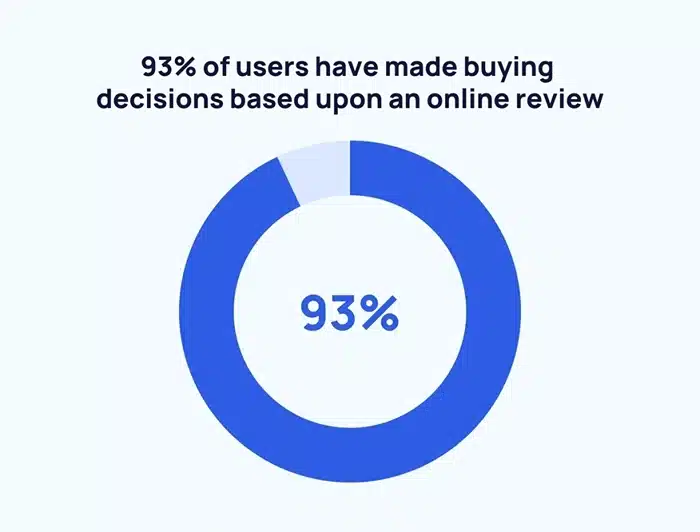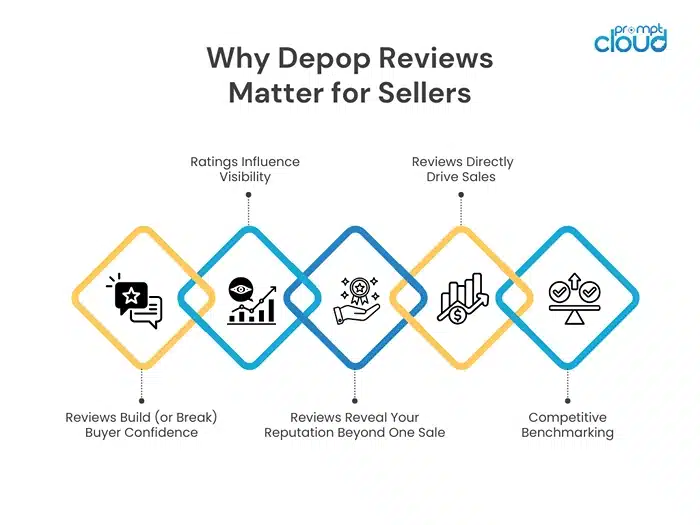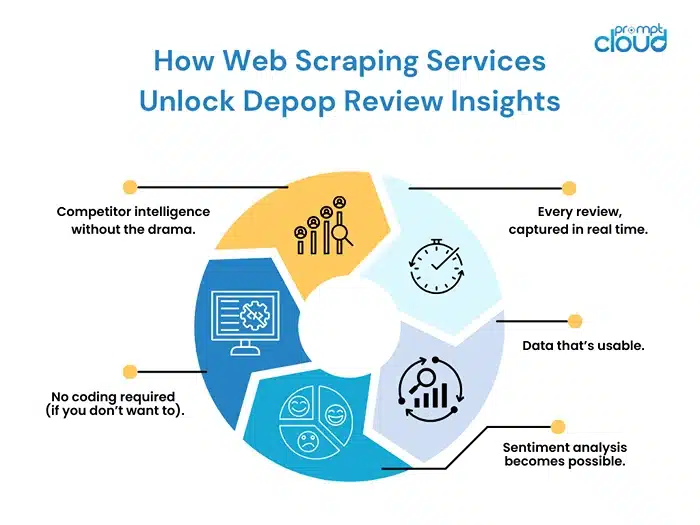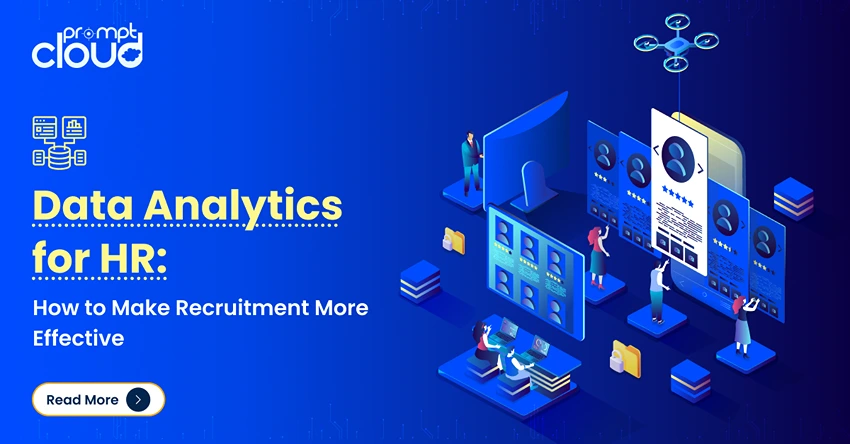
**TL;DR**
- Depop is booming: A leading resale platform with millions of users in the UK & US, shaping the future of sustainable fashion.
- Reviews = Trust + Sales: 90%+ of buyers check reviews before purchasing. On Depop, positive ratings push your listings up and boost conversions.
- They’re insight gold: Reviews reveal what buyers love, what frustrates them, and even highlight style trends before they hit mainstream.
- Manual tracking? Impossible: Sifting through hundreds of comments by hand is slow and error-prone.
- Enter web scraping: A Depop scraper automates review collection, structures the data, and powers sentiment analysis, so you can act on real customer feedback, fast.
Why Depop Is Becoming a Big Deal in Fashion Resale
Once considered a niche app for Gen Z thrift hunters, Depop has exploded into one of the fastest-growing resale platforms in the UK and the US. It’s where vintage Levi’s, streetwear collabs, and Y2K fashion trends find new life and where independent sellers build serious businesses.
The numbers tell the story. Depop crossed over 30 million registered users worldwide, with a huge portion of its audience under 26. In 2021, Etsy acquired Depop for $1.6 billion, a clear signal that resale isn’t just a fad; it’s a thriving segment of e-commerce. For independent fashion brands and resellers, Depop isn’t “just another app.” It’s a cultural hub where buying and selling are wrapped up with identity, sustainability, and social validation.
But here’s the catch: the platform is crowded and competitive. Thousands of sellers list similar products daily. Shoppers have options. So what separates the shops that thrive from those that fade into the background? Trust. And on Depop, trust lives and dies by your reviews.
Photos get them in the door; your reviews close (or kill) the sale. Buyers want the inside scoop: Was the item real? Did it arrive on time? Did the seller ghost when there was an issue? Rave reviews convert; bad ones spread like wildfire and can bury your shop before you even see it coming. And this isn’t just opinion, a BrightLocal study found that 93% of consumers read online reviews before buying, and that habit translates directly to platforms like Depop.

Image Source: wisernotify
For sellers and brands exploring Depop as a resale or trend-discovery channel, reviews aren’t just “nice feedback.” They’re a powerful source of competitive advantage. And the deeper you dig into what buyers are actually saying, the more you uncover about what drives sales, where you’re falling short, and even what’s trending in your category.
That’s exactly what this article will unpack:
- What Depop reviews reveal about buyer behavior and seller performance.
- How analyzing them at scale can give you insights far beyond a single comment thread.
- And why web scraping services make it possible to gather and analyze all that feedback efficiently—without drowning in manual work.
Next, let’s break down why Depop reviews matter so much for sellers, and what they can reveal when you stop skimming and start analyzing.
Why Depop Reviews Matter for Sellers
If you’ve ever scrolled through a Depop shop, you know the drill. Before hitting “Buy,” buyers almost always glance at the seller’s reviews. That quick look often decides whether they trust you or move on to the next closet down the feed. And on Depop, that trust isn’t optional—it’s your lifeline.
Here’s why reviews pack such a punch:

1. Reviews Build (or Break) Buyer Confidence
Shoppers can’t touch the product, try it on, or meet you in person. Your reviews are their only social proof. A string of positive comments about accurate descriptions, fast shipping, and friendly communication makes you look legit. A few unanswered complaints? Buyers bounce. The numbers back it up: around 93% of shoppers check reviews before they purchase. On Depop, that habit is magnified — buyers don’t know you, so your ratings and feedback are the only trust signal you’ve got.
2. Ratings Influence Visibility
Depop’s algorithm isn’t public, but one thing’s clear: sellers with strong ratings and active reviews often get more visibility. When buyers filter by “Top Rated,” or when Depop promotes trending shops, consistent five-star feedback helps your listings float to the top. On a platform with thousands of new items added daily, that’s a huge edge.
3. Reviews Reveal Your Reputation Beyond One Sale
Every review is a micro-story about how you run your shop. Are you known for quick shipping? Do buyers rave about your packaging? Or do you see a recurring complaint about slow replies? Patterns in reviews tell future buyers what to expect before they even message you. And this reputation builds over time—it’s your digital street cred.
4. Reviews Directly Drive Sales
A Bazaarvoice report found that products with reviews can enjoy a conversion rate uplift of up to 270% compared to those without. On Depop, this effect is even sharper because buyers want reassurance; they’re not getting a counterfeit or a bad deal. Reviews don’t just reflect sales—they drive them.
5. Competitive Benchmarking
Your reviews don’t exist in a vacuum. Buyers compare shops. If a rival seller has glowing feedback on authenticity and you have none, guess where buyers go? Monitoring how your feedback stacks up against others in your category gives you clear targets for improvement.
Depop reviews aren’t just vanity metrics. They’re a live, public scoreboard of your shop’s trustworthiness and performance. For sellers and brands exploring Depop, learning how to analyze and act on this feedback can transform your strategy from guesswork to growth.
What Depop Reviews Reveal (and Why It’s More Than Stars)
A five-star rating looks nice on your profile, but here’s the truth: those little comments buyers leave are doing way more heavy lifting than most sellers realize. They’re not just feedback; they’re a running X-ray of your shop’s health and your buyers’ mindset.
Think about what’s really hiding inside all that feedback:
The real story behind your product quality.
Buyers don’t just say “item as described.” They’ll call out fabric feel, sizing quirks, and whether that “vintage” tee actually holds up. That’s gold. Spotting repeated praise or complaints here tells you exactly what to highlight — or fix — before it tanks your credibility.
Your shipping and service reputation in plain English.
Look at your last ten reviews. Do they mention “came fast” and “great comms”? Or are you seeing “took forever” creeping in? That’s how buyers judge you when you’re not in the room. Depop shoppers rave about sellers who treat them like humans — quick replies and solid packaging get remembered.
Authenticity signals that build (or kill) trust.
Depop lives on brand-name resale. If buyers are calling your items “def legit Nike” — amazing. If you see “not sure it’s real,” even once, you need to address it yesterday. Authenticity doubts spread faster than trends on TikTok.
Trend breadcrumbs you can actually use.
Hidden in those glowing comments are clues about where fashion tastes are headed: “perfect Y2K vibe,” “love the oversized fit,” “sustainable fabric FTW.” That’s not fluff; that’s your audience handing you the language and styles they crave. Ignore it, and you’re guessing while your competitors adapt.
Sentiment patterns that predict your future sales.
One bad review? It happens. But three people mentioning “poor packaging” or “slow replies”? That’s a signal. Same with clusters of praise like “bundle deals” or “free extras.” Reviews reveal what keeps people coming back — and what drives them away.
Bottom line? Depop reviews are a living, breathing focus group that you didn’t have to pay for. But here’s the catch: once your shop grows, keeping tabs on all those patterns manually is brutal. You’ll miss stuff. And missing stuff means missed sales.
PromptCloud offers managed web scraping services tailored for e-commerce brands, delivering clean, ready-to-use data feeds that plug directly into your recommendation engine, pricing system or analytics stack.
Connect with our team today!
The Problem With Manual Review Monitoring (And Why It Doesn’t Scale)
When you’re just starting out on Depop, skimming a few reviews over your morning coffee might work. But as your shop grows, trying to manually track what buyers are saying quickly turns into a full-time job — and not the fun kind.
Here’s the reality:
The volume snowballs fast.
Even moderately successful Depop shops rack up dozens of reviews a week. Each one might seem small, but miss the trend hiding inside them and you’ll only spot problems after they’ve cost you sales. By the time you realize five buyers in a row complained about sizing, that’s five buyers you’ve already lost — and who’ve likely warned others.
You’re wired for reaction, not prevention.
Manual monitoring forces you into whack-a-mole mode. You react to issues after they appear instead of spotting patterns early. That “smelled like smoke” comment? If you caught the first one in real-time across your entire shop, you could fix the storage problem before it turned into a reputation-killer.
Human bias makes you miss the signal.
It’s easy to focus on the glowing praise and mentally dismiss the occasional bad review as an outlier. Or you skim for certain keywords and skip the rest. Meanwhile, the valuable insights — what buyers actually care about, what trends they’re calling out — get lost in the noise. Manual scrolling just can’t compete with systematic tracking.
Competitors aren’t standing still.
You’re not the only one chasing Depop buyers. Smart sellers and brands are already using tools to monitor review sentiment across entire categories — not just their own shops. If you’re stuck manually combing your own reviews while competitors are mining all reviews (including yours) for trend signals, you’re playing blindfolded in a game they can see clearly.
And the biggest issue? Manual review tracking eats your time and gives you no way to connect the dots at scale. There’s no quick way to ask, “What’s the most common buyer complaint over the last three months?” without digging through pages of comments. By the time you figure it out, the moment to act has passed.
This is exactly where automation flips the script. Instead of guessing or scrambling, you can capture every review across your shop (or even your competitors’) in real-time, structured and ready for analysis.
How Web Scraping Services Unlock Depop Review Insights
Here’s the part where smart sellers pull ahead: they stop drowning in comment threads and let automation do the heavy lifting. Web scraping sounds technical, but at its core, it’s just a way to collect all the public data you care about—like Depop reviews—automatically and in bulk.
So what does that look like in practice?

• Every review, captured in real time.
A Depop scraper can pull every new review on your shop (or even a set of competitor shops) the moment it appears. No more manually checking your notifications or scrolling through pages to see what’s new. It’s all collected and stored for you.
• Data that’s usable.
Instead of scattered screenshots and notes, scraped review data is structured: reviewer name, star rating, date, and comment text. That makes it searchable, sortable, and ready for analysis. Want to see all mentions of “oversized fit” over the last six months? That’s one quick filter instead of hours of scrolling.
• Sentiment analysis becomes possible.
Once your reviews are in a structured format, you can run simple or advanced sentiment checks—spotting positive, neutral, and negative themes at a glance. Instead of relying on gut feel (“I think people like my packaging?”), You’ll have actual data telling you which aspects buyers rave about and which need fixing.
• Competitor intelligence without the drama.
Here’s where things get fun: you’re not limited to your own reviews. Public Depop feedback for other shops is just as accessible. Scraping those lets you see what buyers praise competitors for and what they ding them on. That’s a cheat sheet for how to differentiate yourself.
• No coding required (if you don’t want to).
Yes, you could try building a custom scraper yourself, but most sellers don’t have the time or tech chops. That’s why many partner with web scraping service providers (like PromptCloud) who handle all the heavy lifting: setup, maintenance, and compliance. You get clean, reliable review data without ever touching a line of code.
And why does this matter?
Because insights lose value when they’re late. Waiting half a year to notice that buyers keep asking for faster shipping or raving about eco-friendly packaging? That’s six months of missed sales and missed chances to improve. Automated review tracking fixes that by pulling in fresh feedback as it happens, so you can spot the signals early and make changes while they still count.
The best part? This isn’t just about “nice to know” vanity stats. Review scraping feeds directly into decisions that drive revenue: what you stock, how you price, how you describe items, even how you package and communicate.
ASSET: Your FREE Guide to Review Sentiment Analysis for eCommerce
Real-World Ways Sellers & Brands Use Depop Review Data to Win
This isn’t theory. Smart Depop sellers and even big brands dipping into resale are already turning raw review chatter into real business wins. Here’s how:
• Independent sellers fixing problems before they snowball.
One seller noticed a string of reviews mentioning “slow replies.” They scraped all their reviews over six months and found that anytime messages went unanswered for more than 24 hours, ratings dipped. The fix? Automated DMs and setting clear response-time expectations in their bio. Ratings shot back up, and sales followed.
• Spotting micro-trends faster than the mainstream.
Buyers often describe what they love in language that signals trends early: “perfect Y2K mini,” “love the sustainable fabric,” “baggy fit on point.” Sellers tracking these keywords across hundreds of reviews — theirs and competitors’ — spot which aesthetics are heating up before everyone else catches on. That’s how you stock what buyers will want next season, not what they wanted last year.
• Brands using resale to guide product decisions.
Some apparel brands watch their own products’ Depop reviews long after retail launch. Why? Because resale buyers are brutally honest. If you see 50 comments about “runs small” or “falls apart after one wash,” that’s R&D insight you won’t get from a polished NPS survey. Scraping reviews lets product teams feed this data back into design and quality control.
• Marketers mining buyer language for campaigns.
Look at the words buyers use in positive reviews: “great oversized fit,” “rare vintage find,” “authentic streetwear.” Those phrases become ad copy gold. Sellers using review language in their listings or marketing materials sound more authentic because they’re literally mirroring their audience’s voice.
• Competitor intel without the guesswork.
Want to know why a rival shop is blowing up? Scrape their reviews. You might find their buyers rave about bundle discounts or creative packaging. That’s a playbook you can borrow and improve on. The same goes for spotting where competitors drop the ball — those gaps are your opportunities.
The key thread? Every one of these wins comes from structured, large-scale review analysis. You can’t see these patterns skimming 10 comments. You find them when you have every review in one place, sliced and analyzed for trends.
And this is just scratching the surface. As resale grows and Depop continues to scale, review insights will only become more powerful. In the next section, we’ll look ahead at where review analysis is headed and why early adopters will dominate as AI and automation supercharge this space.
The Future of Review Analysis on Depop (and Why Early Movers Win)
Depop isn’t standing still, and neither are the ways sellers can use review data. The resale boom is only getting bigger — analysts project the second-hand fashion market will double in the next five years — and with that surge comes even more buyers, more sellers, and yes, way more reviews. If you’re waiting to “figure it out later,” your competitors won’t.
Here’s where things are headed:
AI is changing the game.
Scraping gives you the raw data, but the next wave is AI-powered sentiment and trend analysis. Instead of manually tagging reviews as positive or negative, machine learning can instantly map themes: sustainability mentions, fit complaints, authenticity praise, and even emoji sentiment. The faster you see patterns, the faster you can act.
Real-time feedback will drive real-time decisions.
Tomorrow’s winners won’t just scrape reviews monthly; they’ll have live dashboards showing shifts as they happen. A spike in “too small” mentions this week? You adjust your size chart and listings before sales dip. Competitor’s buyers raving about bundle discounts? You launch your own deal while it’s still hot.
Resale insights will feed the entire product lifecycle.
Depop reviews aren’t just useful for sellers on the platform. Big brands are waking up to how resale feedback exposes long-term product performance. If your designs consistently get resold with “poor quality” complaints, that’s a signal for R&D. If resale buyers love the sustainability angle, that’s a green light for marketing.
The data arms race is real.
As tools get better, the gap widens between sellers using them and those who aren’t. Think of Google SEO a decade ago the brands that started early are dominating today. The same thing is happening with digital shelf analytics and review scraping on resale platforms. Early adopters will own the space.
The takeaway? Depop reviews are going from “nice to have” to “mission-critical.” If you’re not tracking, analyzing, and acting on this feedback now, you’ll fall behind sellers and brands who are. The good news? The tech already exists to make this painless and powerful if you grab the opportunity early.
Turning Depop Reviews into Your Growth Engine
Depop isn’t just another resale app; it’s the frontline where buyer trust is won or lost. And in a market that’s exploding with new sellers and shifting trends, your reviews are more than stars they’re the clearest signal of what’s working, what’s broken, and where the next opportunity lives.
The sellers who win on Depop don’t just hope for good reviews; they listen to what’s inside them and act fast. They see reviews as a roadmap:
- a roadmap to better listings and packaging,
- a roadmap to catch micro-trends before they peak,
- a roadmap to edge out competitors who are still guessing.
And thanks to web scraping services and digital shelf analytics, doing this isn’t some “big brand only” move anymore. The tech is accessible, ethical, and powerful. A Depop scraper can automate the hard part, leaving you with clear, actionable insights. That’s how you go from reactive to proactive, from chasing sales to shaping them.
The resale market is getting louder. Buyers are talking. Your job is to make sure you’re listening at scale and acting before anyone else does. Because in a platform built on trust and trends, early movers don’t just survive; they dominate.
PromptCloud offers managed web scraping services tailored for e-commerce brands, delivering clean, ready-to-use data feeds that plug directly into your recommendation engine, pricing system or analytics stack.
Connect with our team today!
FAQs
Depop reviews are ratings and comments from buyers on your shop’s listings. They directly impact buyer trust, influence Depop’s algorithmic visibility, and give you insight into what your customers love or hate. Strong reviews can drive higher conversions and repeat sales.
Yes. While you can manually read your reviews, scaling that is tough. Web scraping services handle the heavy lifting, collecting and structuring the data so you can focus on the insights. No coding needed if you work with a scraping partner.
Scraping public review data ethically and in compliance with Depop’s terms is possible. Partnering with an experienced web scraping provider ensures data is collected responsibly and securely.
Buyers often describe products with phrases that signal style shifts (e.g., “Y2K vibe,” “oversized fit”). When you track this language across hundreds of reviews, you can see what’s gaining traction and adjust your inventory or marketing accordingly.
Yes. Public reviews on competitor shops are fair game for ethical data collection. Analyzing them gives you a competitive edge, seeing what buyers praise or criticize helps you refine your own strategy.



















